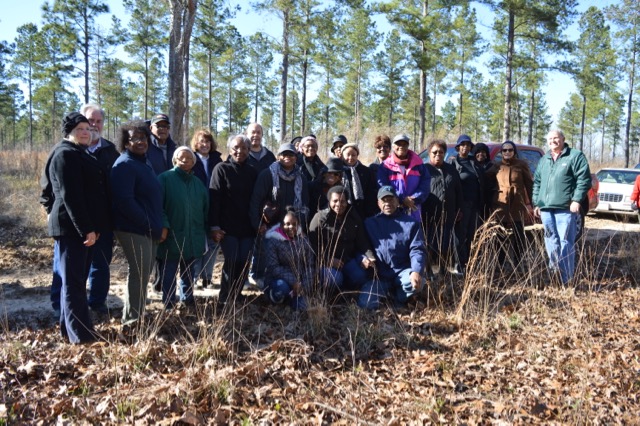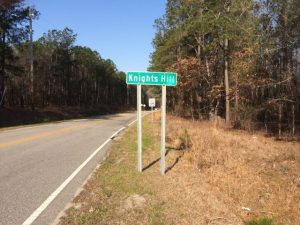In mid-March I had the pleasure of returning to Camden, South Carolina, to present a talk on the Camden-Worcester migration and to do some additional research on the historic Knights Hill community. My week in Camden was filled with many unexpected and moving experiences thanks to my gracious hosts.
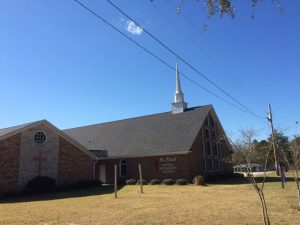
On Sunday, March 11, I attended services at the historic St. Paul United Methodist Church on Knights Hill, the home congregation of many of Worcester’s Camden migrants. Founded in 1868, only a few years after emancipation, the church has been the bulwark of the Knights Hill community since that time. Participating in worship and learning more about the many activities of this church, I could see even more links between Camden and Worcester of which I previously had been unaware.
Beginning in 1869, former slaves, including the King Perkins family (see earlier blog posts, “Chasing Ghosts in Camden, SC” and “The Camden-Worcester Connection”) began purchasing tracts of the Knights Hill plantation, once the property of Johnny Chesnut, Mary Boykin Chesnut’s favorite nephew. The plantation was put up for auction after Chesnut’s death in 1868 and former slaves purchased tracts of land. They built the foundations of a community which they themselves shaped and defined and which thrives to this day. Rooted in their Christian faith and values, the freedpeople of Knights Hill emphasized self-sufficiency and care for one another. One-hundred and fifty years later, those same values are evident in the many programs of the St. Paul Church and the community it serves. When some Knights Hill families, like the Perkinses, migrated north to Worcester in the late 19th century–having lost their land in the aftermath of Reconstruction–they carried those values with them. Worcester’s “Little Camden,” in Worcester’s Beaver Brook neighborhood, replicated Knights Hill in its emphasis on community and self-sufficiency.
On Sunday afternoon, March 11, I presented a talk on “Migration and Home Ties: The Camden-Worcester Connection Through the Portraits of William Bullard.” Thanks to Joan Inabinet and al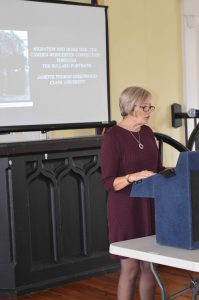 l of the work that she did to publicize and prepare for this event, we had a wonderful turnout. And I was especially pleased when the Rev. James Smith, pastor of St. Paul, invited me to present my talk again at the church on Wednesday evening.
l of the work that she did to publicize and prepare for this event, we had a wonderful turnout. And I was especially pleased when the Rev. James Smith, pastor of St. Paul, invited me to present my talk again at the church on Wednesday evening.
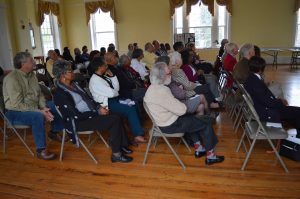
Before the Wednesday evening service, the Rev. Smith made arrangements for a visit to the slave cemetery on Knights Hill. Both the Chesnut family cemetery and the slave cemetery on are on land that is now privately owned and not accessible to the public. But the St. Paul congregation maintains rights to visit. On a cool, clear, almost-spring afternoon, about 20 of us, including members of St. Paul and the Kershaw Historical Society, met at the church. Church member Arthur Robinson led a caravan of 10 cars and trucks to the cemetery. Enveloped in silence punctuated only by occasional bird calls, this peaceful spot sits atop a hill that overlooks the Wateree River and contains the graves of many Chesnut slaves as well as some Knights Hill community members, interred here as late as 1968.
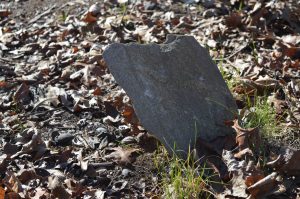
Walking through the cemetery, one could only imagine the lives of the nameless men, women, and children buried there. Many slave graves are unmarked, with indentations in the landscape the only sign of their final resting places; others are marked by a simple field stone or an outline of brick.
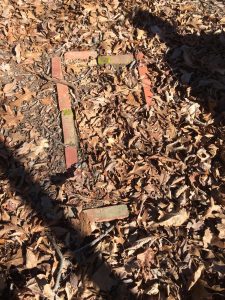
The anonymity of the slave graves served as both a literal representation and a metaphor for the loss of history, of the stories of generations of people who labored as slaves for the first 256 years of American history. And their silence implored us to remember them. A few graves bore small items, such as cups–a favorite item of the deceased or the last thing that they touched–and even a seashell, perhaps a symbol of “crossing over” the sea to the next world.
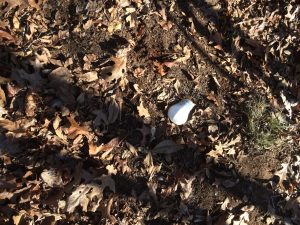
Several church members took the opportunity to visit the graves of ancestors and some left flowers. We ended our walk through the cemetery by joining hands and saying a prayer, to remember and honoring the men, women, and children laid to rest in the cemetery.

After a visit to the Chesnut family cemetery, just down the road, Mr. Robinson pointed out the site of the Knights Hill “big house,” destroyed by fire early in the 20th century. Recalling his life on Knights Hill, Mr. Robinson explained, “We had everything we needed here. ” Wildlife and fish from the Wateree, berries from the woods, and garden plots sustained this community for generations.
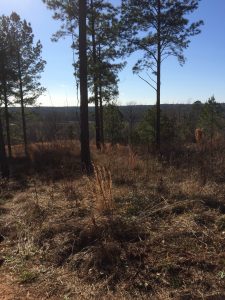
Then, led by Ms. Sue Jones, we visited the King and Rose Perkins properties on Knights Hill.
Like the cemetery visit, this was an unexpected and powerful moment for me, to see the property that meant so much to this former slave and his family, a tangible symbol of their freedom. Ms. Jones told us how her grandfather attained 3 1/4 acres from King Perkins in exchange for an ox. Across the road the house of Rose Perkins, King’s daughter, still stands in a wooded area that once looked out on open fields. This was the land that in the 1930s Rose proudly explained had been her father’s since “about the first of freedom.”
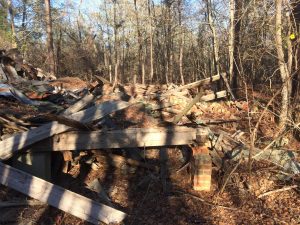
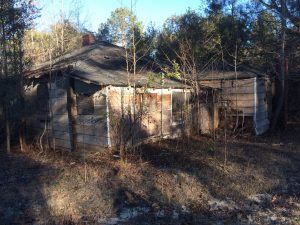
My visit to Knights Hill was an extraordinary experience, one that I will never forget: to see and feel this landscape so rich in history, to meet and speak with members of the community who generously shared stories and memories, to touch the land that meant so much to the Perkinses and other families. I am deeply indebted to everyone who made this day as well as my entire week in Camden an indelible memory, especially the Rev. Smith and his congregation and Joan Inabinet of the Kershaw Historical Society. And thank you to Glen Inabinet for many of these photos.
